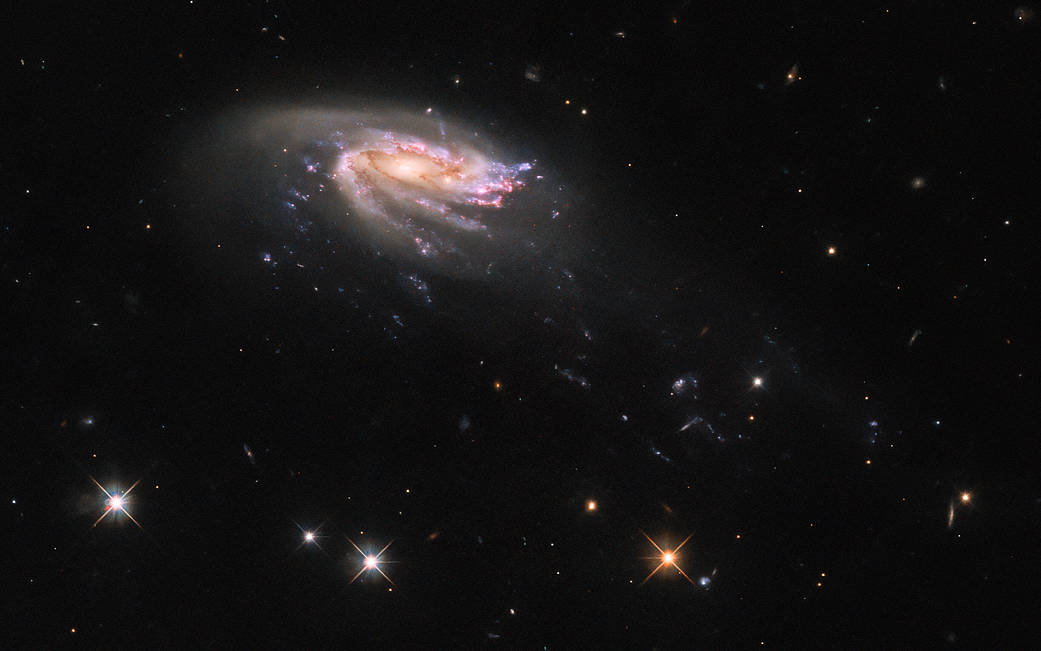The jellyfish galaxy JO206 trails across this image from the NASA/ESA Hubble Space Telescope, showcasing a colorful star-forming disk surrounded by a pale, luminous cloud of dust. A handful of foreground bright stars with crisscross diffraction spikes stands out against an inky black backdrop at the bottom of the image. JO206 lies over 700 million light-years from Earth in the constellation Aquarius.
Jellyfish galaxies are so-called because of their resemblance to their aquatic namesakes. In the bottom right of this image, long tendrils of bright star formation trail the disk of JO206, just as jellyfish trail tentacles behind them. The tendrils of jellyfish galaxies are formed by the interaction between galaxies and the intra-cluster medium, a tenuous superheated plasma that pervades galaxy clusters. As galaxies move through galaxy clusters, they ram into the intracluster medium, which strips gas from the galaxies and draws it into the long tendrils of star formation.
The tentacles of jellyfish galaxies give astronomers a unique opportunity to study star formation under extreme conditions, far from the influence of the galaxy’s main disk. Surprisingly, Hubble revealed that there are no striking differences between star formation in the disks of jellyfish galaxies and star formation in their tentacles, which suggests the environment of newly formed stars has only a minor influence on their formation.
Text credit: European Space Agency (ESA)
Image credit: ESA/Hubble & NASA, M. Gullieuszik and the GASP team
水母星系JO206在NASA/ESA哈勃太空望远镜拍摄的这张图片上留下了痕迹,展示了一个色彩斑斓的恒星形成盘,周围是苍白的发光尘埃云。在图像底部的墨黑色背景下,一小撮前景明亮的恒星带着纵横交错的衍射尖峰,显得格外突出。JO206位于宝瓶座,距离地球7亿光年。
水母星系之所以被称为水母星系,是因为它们与同名的水生动物很相像。在这张图片的右下方,明亮恒星形成的长长的卷须尾随着JO206的圆盘,就像水母拖着它们身后的触须一样。水母星系的卷须是由星系和星系团内介质之间的相互作用形成,这是一种弥漫在星系团中的微弱的过热等离子体。当星系在星系团中移动时,它们会撞上星系团内的介质,这种介质会将星系中的气体剥离出来,并将其吸引到恒星形成的长卷轴中。
水母星系的触角为天文学家提供了一个独特的机会,可以在远离星系主盘影响的极端条件下研究恒星的形成。令人惊讶的是,哈勃望远镜显示,水母星系盘中的恒星形成与水母星系卷须中的恒星形成之间没有明显的差异,这表明新形成的恒星的环境对它们的形成只有很小的影响。
文稿来源:European Space Agency (ESA)
影像来源:ESA/Hubble & NASA, M. Gullieuszik and the GASP team



